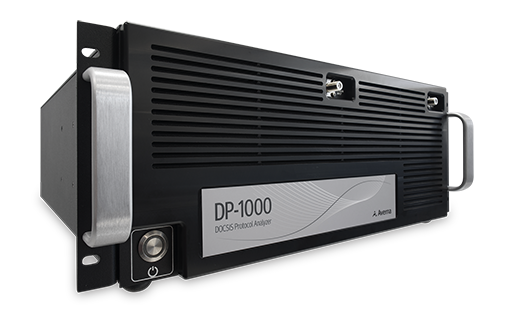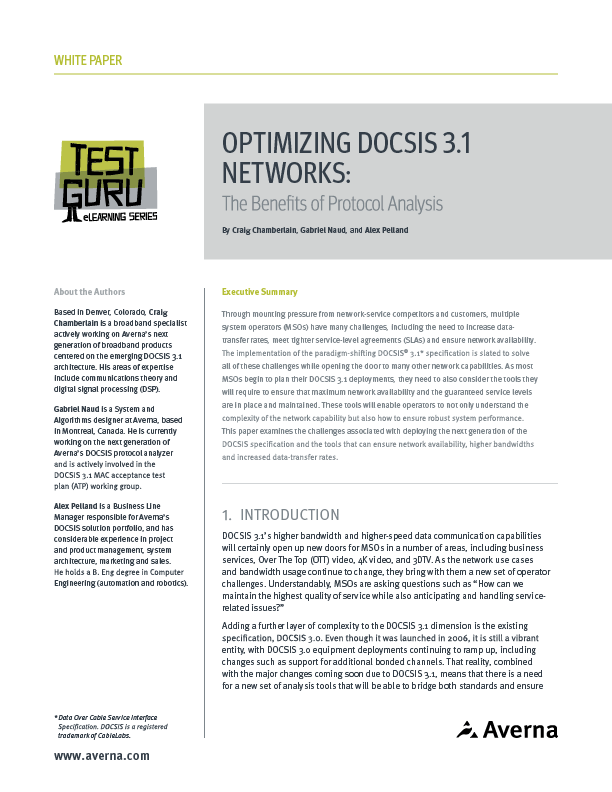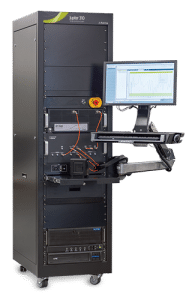
HIGHLIGHTS
DOCSIS 3.1 READY
Real-time capture, filter and complete analysis of all DOCSIS MAC-layer data through FPGA-based signal processing
Developed in conjunction with major industry players, and provides a cost-effective solution for both DOCSIS 3.0 and 3.1
Ensure Smooth 24-7 Operation for Your MAC Layer
Averna’s DOCSIS Protocol Analyzers are the industry standard for functional DOCSIS and EuroDOCSIS network analysis, providing exceptional visibility into the MAC layer. Multiple system operators (MSOs), chipset manufacturers, product developers and certification bodies use them to quickly find and correct trouble spots.
Best Tool on the Market for DOCSIS 3.0 & 3.1 Protocol Analysis
Optimized for real-time signal processing with FPGA technology, the DP-1000 analyzes up to 32×8 DS/US SC-QAM channels, 2×1 or 1×2 OFDM(A) DS/US channels, as well as mixed-mode configurations consisting of SC-QAM, OFDM and OFDMA channels. It offers numerous channel-filtering, demodulation, triggering, display, and upgrade features.
As a passive sniffer between CMTS and CPE devices, the DP-1000 silently captures and filters DOCSIS MAC-layer data in real-time to verify RF parameters, validate MAC-level communication, troubleshoot interoperability issues, and improve network performance.
DP-1000 Highlights
- Supports both DOCSIS 3.0 and 3.1 protocols through FPGA-based signal processing
- Input DS frequency range of 5 MHz–1.8 GHz (5–200 MHz US), and resolution of 1 MHz
- Up to 7 acquisition cards of 200-MHz bandwidth each (5 DS, 1 US and 1 additional US or DS)
- Contained in a single, 19-inch (48 cm), 4U rack for minimal footprint (60 lbs/27 kg)
- FPGA-based architecture is highly flexible, configurable, upgradable and extendable
- Many channel-filtering and display features like burst, constellation, and spectrum
- Complete API to fully automate configuration, capture and analysis
Handles Multiple DOCSIS 3.1 Challenges
- Network bandwidth and channel expansion
- Orthogonal Frequency Division Multiplexing (OFDM)
- New modulation schemes of up to 4096 QAM
- Mixed-mode operation (support of DOCSIS 3.0 and 3.1 devices)
OTHER BROADBAND PRODUCTS







